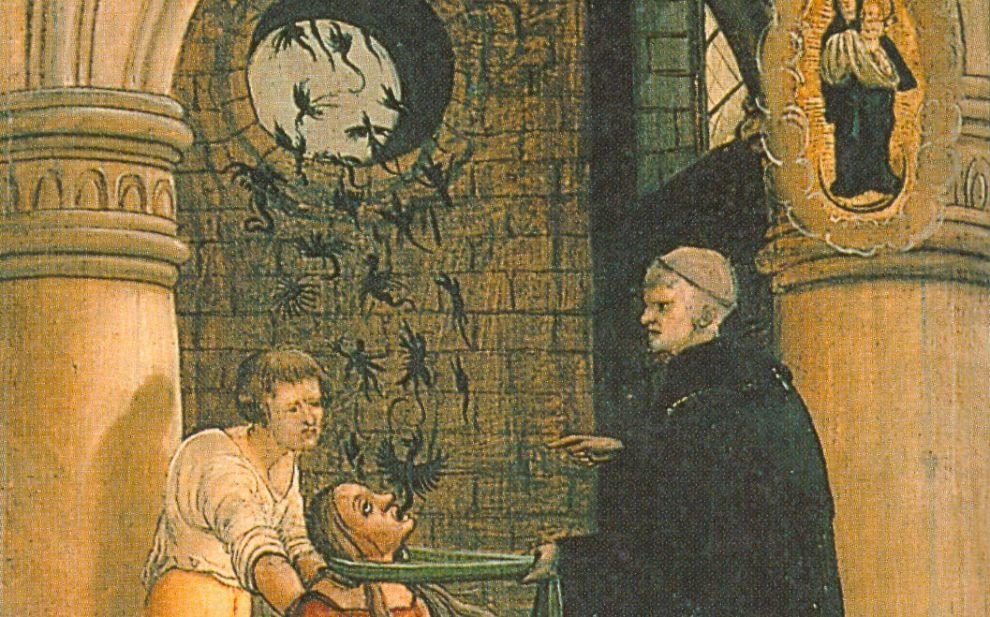A popular theme in horror films is the practice of exorcism. From the 1973 classic The Exorcist to the 2023 film The Pope’s Exorcist, this genre raises questions about the devil’s reality and portrays the Catholic response to evil forces. In movies, exorcism is associated with extreme and sensational events. But does exorcism always involve children screaming and priests beating demons with crucifixes? Is exorcism even a ritual anymore?
Exorcism still happens. But how the church understands this ritual has evolved over the ages.
In 1975, the Congregation for the Doctrine of the Faith (now the Dicastery for the Doctrine of the Faith) commissioned a study called “Christian Faith and Demonology,” which asserts that “many forms of superstition, obsessional preoccupation with Satan and the demons, and the different kinds of worship of them or attachment to them have always been condemned by the Church.” Nonetheless, the document affirms Catholic belief in the existence of evil powers.
While older texts evoking the horrors of hell are no longer used, exorcism did not go away. Today, minor forms of exorcism are performed on the occasion of baptism or adult initiation. Prayers are also included in the church document “Exorcisms and Related Supplications,” which anyone can use when seeking protection against evil.
The exorcisms we associate with horror movies still exist too. Only a priest can perform this “solemn exorcism” (also referred to as a “major exorcism”) and then only with special permission. Unlike the other prayers of exorcism, major exorcism focuses, according to the Catechism of the Catholic Church, on “the expulsion of demons” or “the liberation [of a person] from demonic possession.”
The Catechism counsels that the priest presiding over such an exorcism must “proceed with prudence, strictly observing the rules established by the Church.” And it stresses the importance of distinguishing between demonic influence and psychological illness.
Despite what many Catholics may imagine from cinematic portrayals, an exorcism, according to the U.S. Conference of Catholic Bishops, is simply “a specific form of prayer that the Church uses against the power of the devil.” It is a prayer of trust that God is stronger than evil. Exorcisms can involve breathing, anointing with oil, laying-on of hands, holy water, and the sign of the cross.
Major exorcisms are performed rarely and only by priests who have received special training and who have the permission of the diocesan bishop. Church authorities must also determine that it is a case of genuine demonic influence. And no priest should perform a major exorcism without responsible oversight to protect the recipient’s physical, emotional, and spiritual well-being.
This article also appears in the October 2023 issue of U.S. Catholic (Vol. 88, No. 10, page 49). Click here to subscribe to the magazine.
Image: Wikimedia/Exorzismus an einer Frau, die vorher ihr Kind und ihre Eltern getötet hat, Großer Mariazeller Wunderaltar, 1519












Add comment